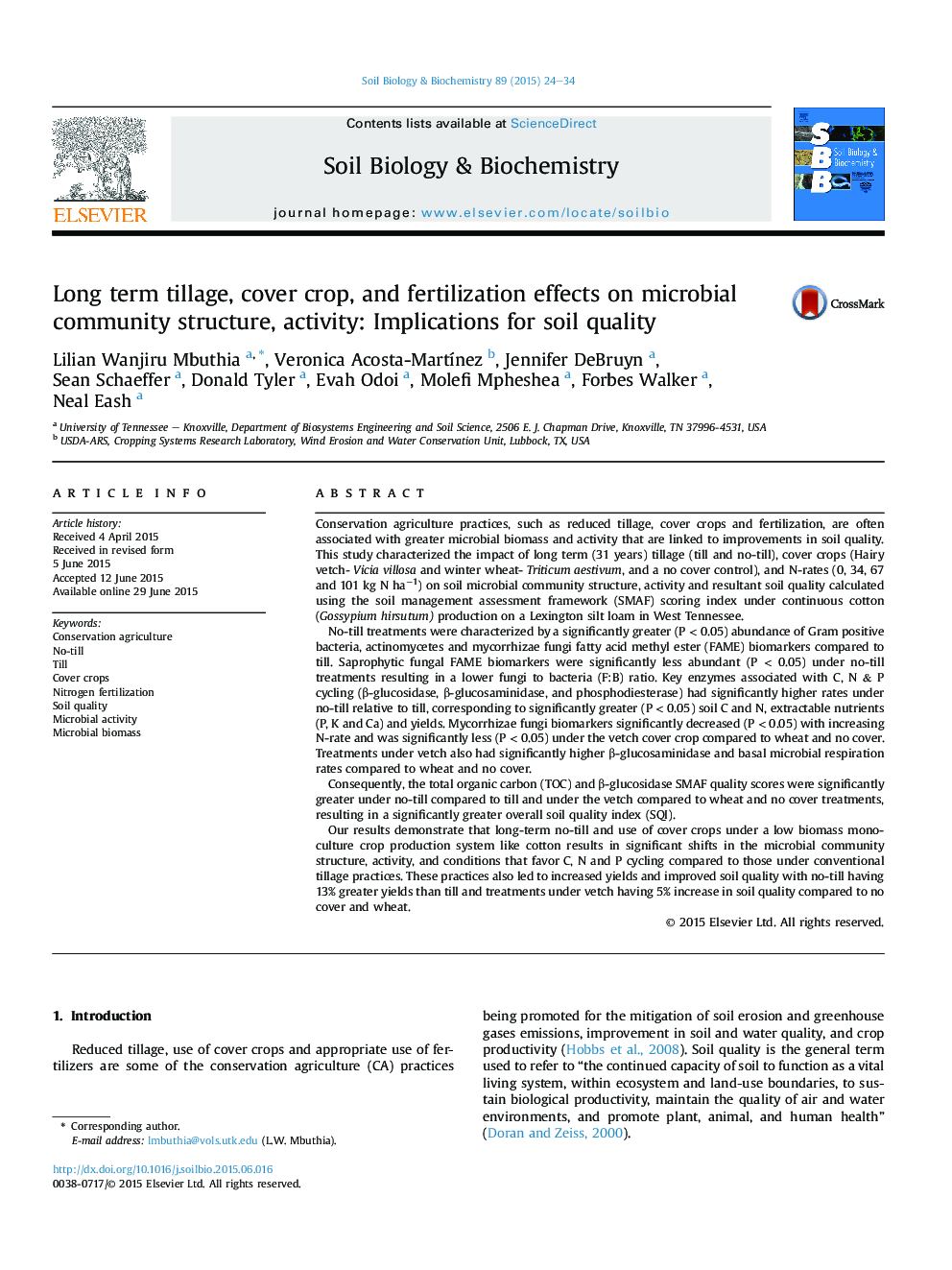| کد مقاله | کد نشریه | سال انتشار | مقاله انگلیسی | نسخه تمام متن |
|---|---|---|---|---|
| 2024451 | 1542595 | 2015 | 11 صفحه PDF | دانلود رایگان |
• Significant microbial community shifts due to no-till, cover crops and N-fertilization.
• Greater gram positive bacteria, mycorrhizae and actinomycetes under no-till.
• Vetch cover and N-fertilization decrease mycorrhizae abundance.
• Carbon, nitrogen and phosphorous cycling enzymes greater under no-till.
• Greater total carbon, nitrogen and yield under no-till with cover crop treatments.
Conservation agriculture practices, such as reduced tillage, cover crops and fertilization, are often associated with greater microbial biomass and activity that are linked to improvements in soil quality. This study characterized the impact of long term (31 years) tillage (till and no-till), cover crops (Hairy vetch- Vicia villosa and winter wheat- Triticum aestivum, and a no cover control), and N-rates (0, 34, 67 and 101 kg N ha−1) on soil microbial community structure, activity and resultant soil quality calculated using the soil management assessment framework (SMAF) scoring index under continuous cotton (Gossypium hirsutum) production on a Lexington silt loam in West Tennessee.No-till treatments were characterized by a significantly greater (P < 0.05) abundance of Gram positive bacteria, actinomycetes and mycorrhizae fungi fatty acid methyl ester (FAME) biomarkers compared to till. Saprophytic fungal FAME biomarkers were significantly less abundant (P < 0.05) under no-till treatments resulting in a lower fungi to bacteria (F:B) ratio. Key enzymes associated with C, N & P cycling (β-glucosidase, β-glucosaminidase, and phosphodiesterase) had significantly higher rates under no-till relative to till, corresponding to significantly greater (P < 0.05) soil C and N, extractable nutrients (P, K and Ca) and yields. Mycorrhizae fungi biomarkers significantly decreased (P < 0.05) with increasing N-rate and was significantly less (P < 0.05) under the vetch cover crop compared to wheat and no cover. Treatments under vetch also had significantly higher β-glucosaminidase and basal microbial respiration rates compared to wheat and no cover.Consequently, the total organic carbon (TOC) and β-glucosidase SMAF quality scores were significantly greater under no-till compared to till and under the vetch compared to wheat and no cover treatments, resulting in a significantly greater overall soil quality index (SQI).Our results demonstrate that long-term no-till and use of cover crops under a low biomass monoculture crop production system like cotton results in significant shifts in the microbial community structure, activity, and conditions that favor C, N and P cycling compared to those under conventional tillage practices. These practices also led to increased yields and improved soil quality with no-till having 13% greater yields than till and treatments under vetch having 5% increase in soil quality compared to no cover and wheat.
Journal: Soil Biology and Biochemistry - Volume 89, October 2015, Pages 24–34
